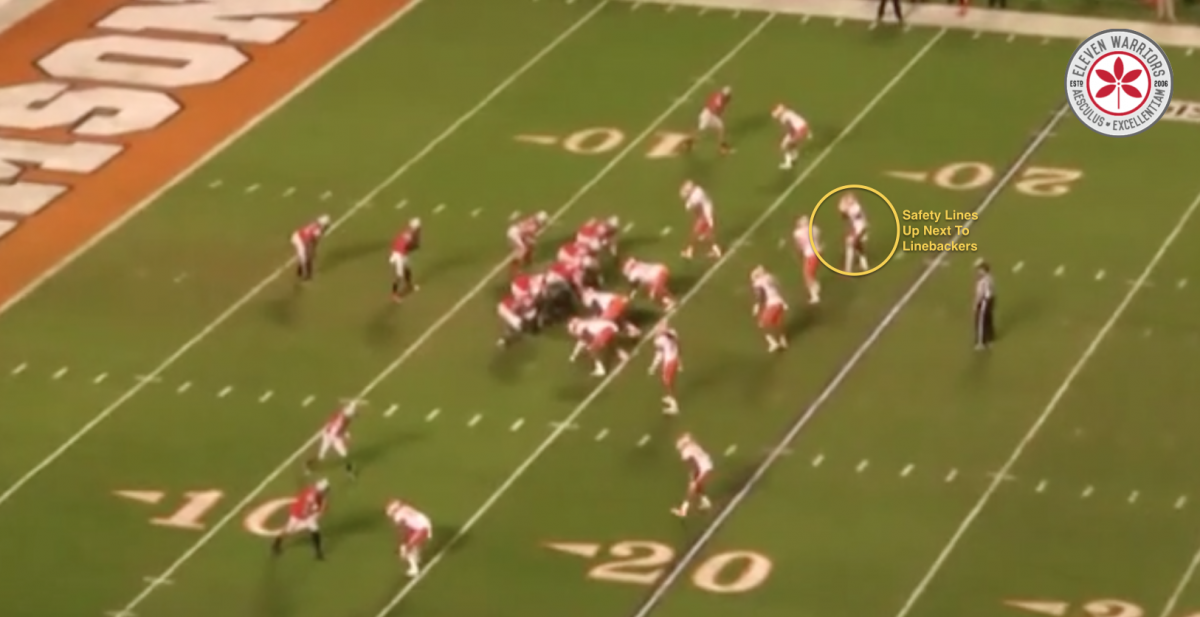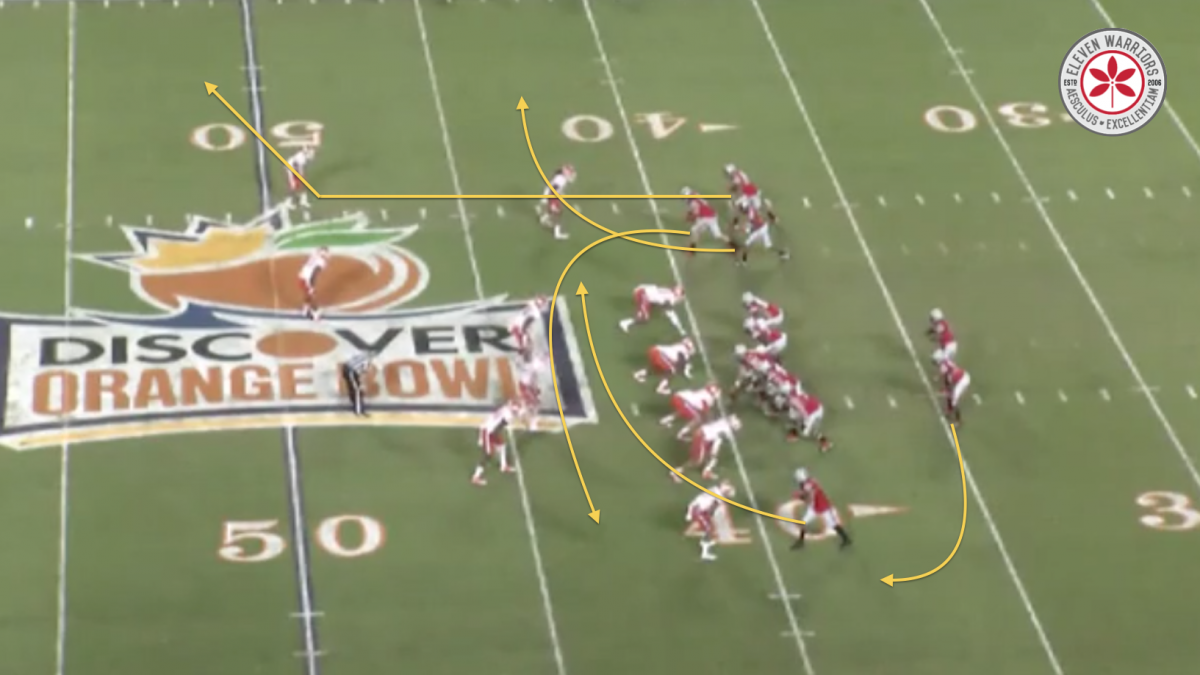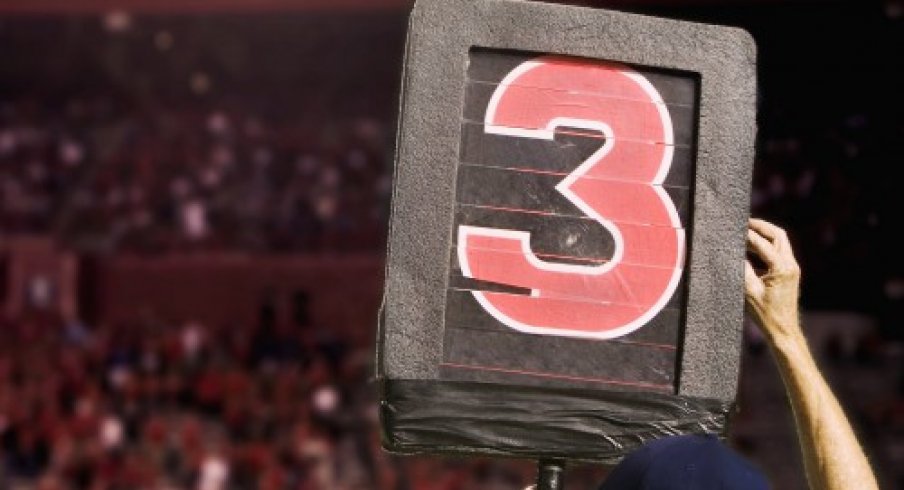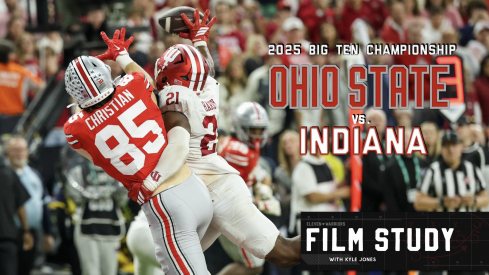For the 2013 Ohio State Buckeyes, perhaps no statistic correlated more directly to success than the ability to convert on third down. While this may seem obvious, the numbers magnify the gap between triumph and failure.
The Buckeyes finished the year with a 46.75% conversion rate, good for 22nd in the nation. While still very respectable, the team was averaging a 52% rate after the first 11 games, which would have tied Florida State as the third highest success rate in the country. But in the Big Ten Championship against Michigan State and Orange Bowl against Clemson the Buckeyes went a combined 3 for 23 on third down, equating to only a 13% conversion rate.
With third downs being so important, play-callers treat them as their own section of the gameplan, just as they would for Red Zone or two-minute drill situations. From there, coaches bucket their plays together depending on the amount of yardage needed to gain a first down:
- 3rd and Short (1-3 yards)
- 3rd and Medium (4-6 yards)
- 3rd and Long (7-9 yards)
- 3rd and Extra Long (10+ yards)
It might seem simple to many fans that coaches should just call plays based on how far a pass route might break downfield, or by how many yards they gain on a specific running play, but defenses also have this information. Imagine all the work that quarterbacks and receivers put into the timing of their routes. They can’t expect to be successful if all of a sudden they’re expected to turn a five yard route into an eight yarder on the fly.
Knowing the importance that every team should place on these situations, let’s look at how the Buckeyes appear to approach third downs with Urban Meyer and offensive coordinator Tom Herman in charge.
3rd & Short (1-3 yards)
The best place to start in short yardage situations are the base run and pass plays in a team’s arsenal. For the Buckeyes, that usually means the inside zone run. Often times, the Buckeye offensive line has been dominant enough to move their opponents back enough for running backs like Carlos Hyde to fall forward for a first down.
As shown here against Northwestern, the line successfully blocks the inside zone, allowing Hyde to rumble forward and convert a 3rd & short, as he would on three occasions that evening.
While many believe that going with a “Big” formation with multiple tight ends or extra linemen might give an offense the advantage in short yardage, defenders are now packed into a small space. By spreading out their formations across the field, the Buckeyes make a defender responsible for up to five yards of open field to defend on their own, a scary proposition with a shifty runner like Braxton Miller coming your way.
But defenses adjust in these situations, often playing press coverage or bringing additional defenders closer to the line of scrimmage. Both Michigan State and Clemson bought into this philosophy, preferring to cover the Buckeye wideouts in one-on-one coverage and gaining an advantage against the run.

Meyer and Herman have found ways to still maintain an advantage on 3rd & short though, usually with option football. Anyone familiar with Meyer's offenses knows his desire to gain a numerical advantage by making the quarterback a threat to run instead of just handing off. On 3rd & short, the Buckeyes like to spread the field and locate one defender to leave unblocked, forcing him to be wrong no matter what.
While we haven't seen it much from the Buckeyes under Meyer, many teams will often throw deep play-action passes in these situations, knowing both that the defense is looking for a short run, as well as that they can also easily go for it on 4th down if they don't succeed.
It's not exactly a stretch to declare that 3rd & short is the most desirable situation to be in as a play caller, as they can operate within their comfort zone with no concepts coming off the table. Unfortunately, it only gets more difficult from here.
3rd and Medium (4-6 yards)
Surprisingly, the Ohio State offense rarely found themselves in these situations last fall. The Buckeyes seemed to have a feast or famine approach on 1st & 2 downs, developing a bad habit later in the year of taking sacks and committing penalties that left them in long yardage situations.
While no one wants to have to gain more yards to keep their drive alive, 3rd & medium situations do allow offenses a bit more breathing room to operate. Defenses can't stack bodies inside or press receivers on the line, knowing that they're looking downfield. However, an offense can still pose the threat of a potent running attack, as well as run quick, 3-step passing routes such as slants, outs, and hitches.
When teams gave Ohio State receivers a cushion, the Buckeyes were more than happy to call those kinds of pass patterns, as shown in this example of a 3rd & 4 against Cal.
3rd & medium is usually the least predictable situation as far as the defense is concerned, so staying balanced in the approach is key. Teams must be able to show throughout the course of a game or season that they can convert a 3rd & 5 through either the ground or the air to keep defenses from jumping either one.
For the Buckeyes, this means a slight tweak to their option game, packaging the run and pass together. Instead of making a defender decide between the QB or the running back, they'll make them decide between covering a receiver or stopping the run.
Meyer and Herman like to use one of two routes in this situation. If the defense shows a zone, the Buckeyes like to counter with a screen pass:

If the defense appears to be playing single coverage on the receivers, they'll often run a 5 yard hitch:

Throughout the 2013 campaign though, opposing teams began playing more press coverage against Ohio State in an effort to stop these quick routes. Knowing the receivers would struggle to get upfield after getting jammed, the Buckeyes began calling shallow crossing routes in these situations.

As we see though, Braxton Miller appears to be uncomfortable here and didn't want to throw into a small window, as we've discussed before.
While the Buckeyes did a great job of avoiding 3rd & medium situations almost entirely last year, they can't count on that moving forward. Converting plays like the one above will be paramount if they hope to build on 2013's success.
Next week, we'll look at how Meyer, Herman, and the Buckeyes approach 3rd & Long and 3rd & Extra Long situations.


